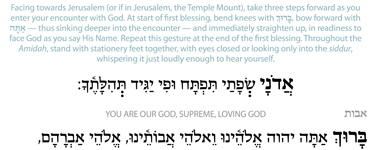
The synthesis of image and word, enhanced by an unusually original typographic presentation of the prayer-text itself and a new and lyrical translation, acts as an incredibly useful trigger to awaken us to the power of our tefilot.
Rabbi Jeffrey Saks, director of ATID, Jerusalem
Considering a donation to your synagogue? Click to see: a quantity of siddur Nehalel beShabbat can be astonishingly inexpensive.
For Nevarech Press contact sales[at]nehalel.com ::: Siddur Nehalel © Nevarech Press and Michael Haruni, 2012, 2015 ::: All rights reserved
All translations, graphic designs, text developments and arrangements, and other contents presented in this site,
except photos with authorship stated as being otherwise, © Nevarech Press, 2012, 2015


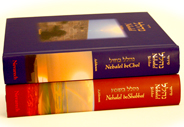
Why Nehalel?
Anyone who has prayed from a siddur knows that to do so with kavanah — the mental focus with which we are required to try praying — is an enormously challenging ideal. The difficulty is experienced as much by people who pray regularly and devoutly as by those less familiar with a siddur.
The two-volume siddur Nehalel was created to assist us all in meeting this challenge. By juxtaposing photographs depicting the meanings of the texts, it directs our attention to what our prayers are about.
The power of photographs makes this a siddur for holding when standing before the Almighty. Nehalel, like no other, helps us achieve a vivid awareness of the meanings in prayer, as well as of the Being to Whom we communicate them.
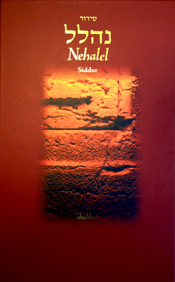
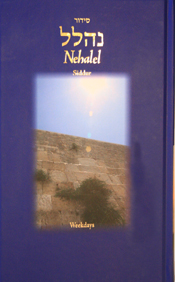
What's now available?
The first volume of Nehalel, the full Shabbat siddur Nehalel beShabbat, nosach Ashkenaz, is now available both in standard hardback format and as the comfortable-to-hold, compact soft cover edition. It contains introductory pieces by Rabbi Daniel Landes, and by Rabbi Dr. Zvi Grumet. You can see the full Contents here.
Both editions of Nehalel beShabbat can be bought in Judaica stores as well as online.
We are also delighted to announce that the full weekday siddur, Nehalel beChol, has just now appeared.
Nehalel beChol can currently be purchased online, and is scheduled in the coming weeks to become available also in Judaica stores.
Nehalel beChol contains an introductory piece by Rabbi Dr. Nathan Lopes Cardozo. The full contents of this volume can be viewed here.
Nehalel beShabbat and the forthcoming Nehalel beChol each contain well over six hundred pages of full-color print on high quality paper.
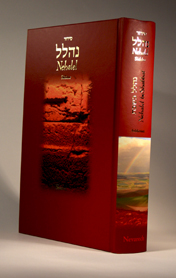
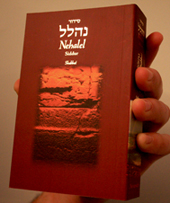
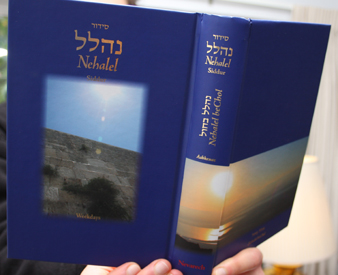
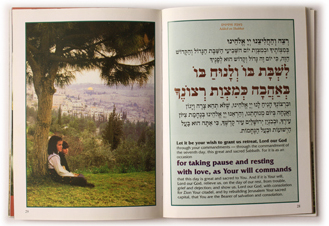
What's the connection with the Nevarech Bencher?
Nehalel is modeled on the Nevarech bencher, which in 1999 pioneered the idea of juxtaposing, alongside traditional prayers, photographs that portray their meanings. Nevarech rapidly became a staple of open-visioned, traditional Jewish homes.
Messages have continually come in from people discovering Nevarech, telling us that Birkat Hamazon (Grace After Meals) — a prayer they may have recited every day since childhood — is suddenly brought to life by the photographs alongside its text. The full Siddur, Nehalel, became the natural next step.
Robustly modern in its design yet firmly committed to the traditional text, Nehalel brings this coming-to-life effect to the entire liturgy.
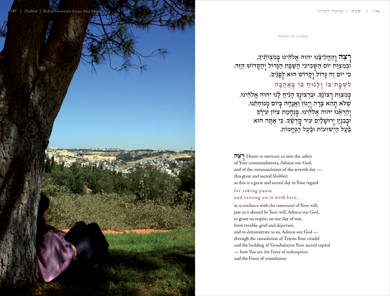
What does Nehalel show us?
By placing photographs that show the meanings alongside the traditional text, Nehalel makes us powerfully aware of the themes that intersect in the Siddur.
The liturgy celebrates the Creator of our spectacular environment — the cosmic, earthly and Eretz-Yisraeli, the universal human environment as well as the national. It speaks our thanks for the gift of our lives within these; and through it we plead for personal, national and human welfare. Repeatedly, the Siddur recounts the catastrophes in our history, of destruction and exile, and then turns to our redemptions — the pattern intensely realized during the last century; and on almost every page we point to Jerusalem as the symbol of the complete redemption we yearn for.
The images in Nehalel reflect these different themes. The photos are contemporary and historical; of the natural order, and of human reality; from Eretz Yisrael, and from a much wider panorama. Many are drawn from archives — documenting the dark times in Europe, as well as the triumphs of modern Zionism.
The result is a work that constantly shows us the relevance of the liturgy to our lives — with a force that possibly no siddur has achieved ever before.
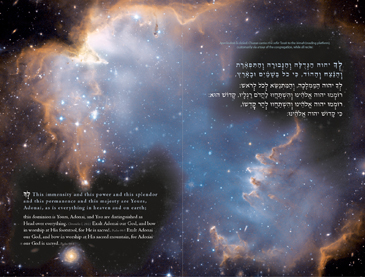

What's special about the text itself?
Extensive resources have gone into ensuring that the fully orthodox Hebrew text is reliable and accurate, so that this boldly innovative presentation remains fully dedicated to tradition. For the while, Nehalel is available only in nosach Ashkenaz.
The Hebrew font used in Nehalel is graceful and readable. It also incorporates state-of-the-art yet unobstructive pronunciation symbols: an easily read symbol for stressed syllable, and clearly visible distinctions between kamatz katan and kamatz gadol, as well as between sheva na and sheva nach.
The new English translation is both elegant and literal, in a living, contemporary idiom while uncompromisingly faithful to the Hebrew.
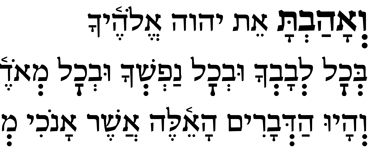
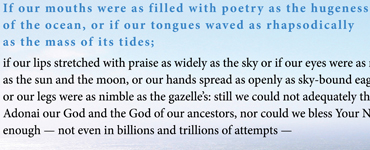
What's distinctive about the instructions?
Instructions, throughout Nehalel, are designed to assist those users relatively unfamiliar with the liturgy and practice. But they are at the same time set graphically to remain unobtrusive to the maven.
They are written in a style that tries, where conciseness enables it, to avoid promoting automaton-like motions, and to address instead the user's quest for meaning.
